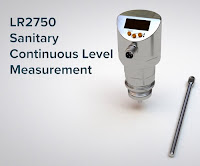Belt conveyor scales have become an important part of most bulk material handling facilities. However, being relatively unobtrusive in most conveyor systems, they are often overlooked or ignored after their initial installation. Lack of simple maintenance will potentially cause significant reduction in the accuracy capabilities of these instruments. Most belt conveyor scales are capable of providing reliable results within ±0.50% of their full-scale rating. Belt conveyor scales that have been certified via the National Type Evaluation Program (NTEP) are capable of providing results that meet the criteria of the National Institute of Standards and Technology (NIST) Handbook-44, which is 0.25%. This is defined as being within 0.25% of actual material load and repeatable within a 0.25% bandwidth.
Regardless of the accuracy capability of the scale design, it is unlikely that these devices will perform as promised if simple maintenance procedures are not strictly adhered to. Every scale installation will develop its own set of operating characteristics; therefore it is absolutely necessary to monitor the scales performance and provide routine maintenance as required. It is generally advised, throughout the belt scale industry, that calibration checks be made frequently during the weeks after initial installation, then to increase the time frame between calibrations as statistical results are obtained. While this is a simple suggestion to follow, all too frequently the increase in time between calibration verifications defaults to only whenever a problem is suspected. By then it is too late, incorrect weighments have been made, processes have been interrupted and inventory levels need other means of verification.
Establishment of a routine inspection procedure, including not only the belt conveyor scale, but the entire material handling system, will result in an increased confidence in the scale and ultimately greater control of the accuracy it is providing. It is important to remember that the entire conveyor that the belt scale is installed in becomes part of the “weighing system,” and that any changes that occur or are performed within this conveyor can and probably will affect the performance of the scale. Therefore, in addition to a routine scale maintenance procedure it becomes imperative that any and all maintenance performed on the conveyor be reported to the individual or department responsible for the scales performance.
Verification of the basic mechanics of the conveyor system itself is an integral part of the scale maintenance procedure.
Verification of the basic mechanics of the conveyor system itself is an integral part of the scale maintenance procedure.






